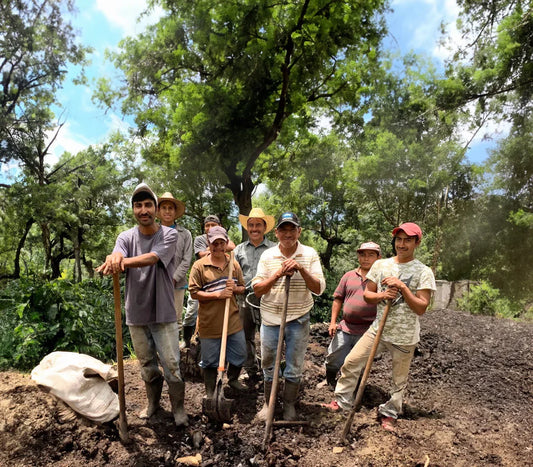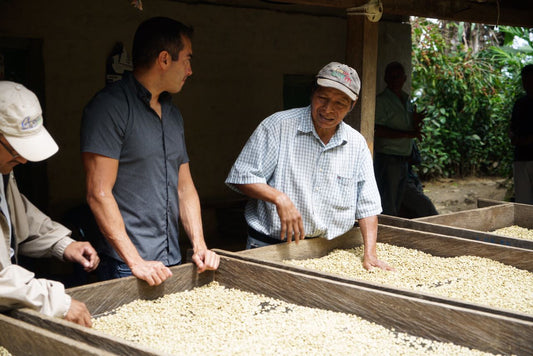
Revamp Your Holiday Dinner with These Festive Central American Dishes
Forget the turkey: these are some of the best holiday dishes in Central America.
To most of us in Central America, the holidays mean two things: food and family. Our unique blend of ancient and modern cultures has given rise to a mouthwatering array of flavorful dishes. And we all know that they are best enjoyed with the ones we love.
Table of Contents
The holiday playbook is the same for many Latino households: wake up, flock to the kitchen, and participate in a flurry of activity that does not cease until the clock strikes six.
The kitchen is where it’s at: with primos y primas, tíos y tías making everything from tamales and empanadas to pozole, buñuelos, and ponche.
This rich mix of cultural influences and family recipes has resulted in a unique combination of ingredients and flavors that makes for a truly unbeatable holiday seasoning – see what I did there?
Although it is impossible to choose a favorite, the following dishes are those I most anticipate every Christmas.
Not only are they delicious, they have a rich history and are known for being favorites in households across the continent.
Intrigued? You should be. Perhaps one of these dishes will become a holiday staple for your family, too!
Tamales & Nacatamales
Tamales are a classic of Central American cuisine. From Mexico to Costa Rica, each country has its own version. However, tamales de masa colada are guaranteed family favorite.
A classic Central American favorite, you may already be familiar with tamales. But, did you know that tamales vary greatly from country to country?
Tamales de masa colada are a festive crowd pleaser: their main characteristic is that the dough becomes soft and silky because it is first dissolved in water or broth, then strained and cooked on the stove until it acquires the consistency of a delicate polenta. It is then covered in corn or banana leaves, and steamed or boiled, making it both delicious and healthy!
And, as with many a Central American dish, we know how to take it up a level. Introducing: the Nica nacatamal.
Everyone’s abuela has their own distinct recipe, but many make the relleno by combining pork, bell pepper, naranja agria, maseca, sazón, and an array of toppings, including olives, tomatoes, capers, and sweet peas.
For me, nothing tastes more like Christmas than a nacatamal. Why not give it a try this year? You can bet your friends will thank you.
Bacalao a la Vizcaína
Another unmissable dish to look out for during the holidays in Central America is bacalao a la vizcaína.
Bacalao a la vizcaína is salted cod stewed in a sauce of sautéed onion, garlic, and the pulp of dried peppers, called ñoras, all thickened with bread. These ingredients are ground with a pestle and mortar, strained, and then added to an earthenware casserole to slowly cook.
In the creative hands of Mexican cooks, this classic became a rich stew of shredded cod cooked in a spicy tomato sauce, with many regional variations. On the coast of Veracruz, the cod is mixed with potatoes.
In other parts of Mexico, bacalao a la vizcaína is a simple but very tasty stew, enriched with olives, and sometimes pickled jalapeños.
To season the cod, many people sauté garlic, onion, and raw tomatoes in olive oil. Others follow a more traditional Mexican technique, which consists of roasting these ingredients and grinding them in a molcajete.
Cerdo Relleno

Simple pork loin, you say. I can practically feel the skepticism burning through the page.
But hear me out.
According to historian Cruz Miguel Ortíz Cuadra, pork is a staple on the Christmas menus of Central American countries because of the Spanish, who tied a great deal of cultural significance to it.
They believed that eating pork stimulated the blood and thus had great nutritional value. In addition, eating pork was also a sign of being a good Christian (very important back then).
The version I remember most fondly is the Nicaraguan version. Cooked slow and low, and stuffed with a mouthwatering combination of peppers, garlic, tomatoes, onion, raisins and capers, it fills the house with festive aromas and slices apart like a knife through butter. It is usually served with white rice and delicious slices of ripe plantains.
Arroz con Guandú
While pork may reign supreme in many Central American countries as the holiday dish of choice, in Panama a popular go-to is arroz con guandú. The simple yet delicious dish is also a favorite in the Caribbean.
The defining ingredient is pigeon peas: a type of legume, native to India. They were first brought to Africa by Portuguese traders in the 16th century, from whence it shortly found its way to the Americas.
Curiously, until well into the 20th century, some rice stews, which are now a fixture on the tables of many Central American families, could only be eaten at certain times of the year. Such was the case of arroz con guandú, a dish that today is inextricably tied to the Christmas season.
In Panama, the festive season is not complete without it.
Its fundamental role in Panamanian holiday tradition can be attributed to its seasonality. Prior to global agribusiness, pigeon peas were only available at this time of year and therefore considered a welcome holiday treat.
These dishes unite in their preparation and the enjoyment they imbue around a festive table. Why not surprise your family with something new this year? Who knows, it could be the start of a new tradition that gets passed down for generations to come. Happy Holidays!
Enjoying home-cooked meals with loved ones are among the most cherished memories for all Latinos.
But it’s also important that the ingredients we put into those meals don’t cause harm to those who grow them.
At Mayorga Coffee, we work directly with organic coffee farmers to ensure that the beans we buy are not only good for the farmers’ land, but also good for our bodies.
Check out our Mayan Blend organic coffee today.


